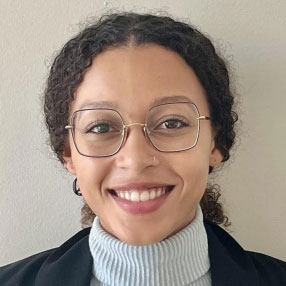As Schools See a Wave of Immigrants, the Past Offers Lessons for NYC & the U.S.
Strom & Meisha Lamb-Bell: Given education and opportunity, today's newcomers will do what others have done for generations: boost America's vitality.
By Adam Strom & Meisha Lamb-Bell | September 28, 2023There is a 1905 photograph taken by Lewis Hine titled “Italian Family Seeking Lost Baggage, Ellis Island.” It shows a mother, with a scarf covering her hair and a baby in her arms, and two children: a boy, about 11 or 12 years old, with what looks like a laundry bag over his shoulder, and a younger girl, sucking her thumb. They all are looking out from the scene, toward the viewer.
The youngsters in the picture were among hundreds of thousands of immigrant children in the early 20th century whose presence would lead to the expansion and improvement of the New York City Public School system. Those young people — immigrants — and the children of immigrants would help New York become the great metropolis it is today. And many of them graduated from the city’s public schools.
Now, the city, and the country, are in another such moment. Over the last two years, 20,000 migrant students have registered for school in New York City. They are part of a national trend. For the first time in several years, the foreign-born population of the U.S. grew, to slightly more than 46 million.
But instead of learning from the past, online peddlers of hate are stoking fear of an “immigrant invasion.” Far-right media figures are using images of immigrant families registering for school to build support for their cause, accompanied by headlines making the absurd claim that 21,000 New York students had been kicked out to make space for migrants.
The reality is that K-12 enrollment in New York City schools has decreased by more than 120,000 over the past five years — and until the last few months, some experts worried that declining immigration might make it difficult for the city to recover those losses. Despite this reality, the narrative of a migrant panic centered around New York schools is taking root.
But, as in the past, there is another story to tell. In contrast to stereotypes, immigrant youth come to school eager to belong, make new friends, speak English and succeed. While learning a new language takes time, these students bring with them social, emotional and cognitive assets that help set them up for long-term success. It is no coincidence that nearly half of Fortune 500 companies, many of which are headquartered in Manhattan, were founded by immigrants or their children.
Much of what schools do to help newcomers succeed is good for their U.S.-born classmates as well. It starts with relationships with educators who understand them; rigorous and relevant curriculum with appropriate support to help make the content accessible; and a school culture focused on building a true sense of belonging.
At Re-Imagining Migration, we’ve seen the dedication of educators in New York firsthand through a multi-year partnership with New York City Public Schools’ Division of Multilingual Learners. Last year, we worked with ninth- and 10th-grade teachers in 13 schools on teaching a pilot unit called “The Words We Use,” focused on migration past and present. The project culminated in an event at the Museum of the City of New York that included 50 students — many of them recent arrivals and English learners — from across the city who came together to build community while sharing their stories through poetry. For students, one of the most powerful takeaways was not simply to see how they connected with their peers, but to reflect upon the similarities and differences between their experiences and those of immigrants who came before them.
In our work with educators around the country, we use the Hine photo to make the point. Instead of sharing the context with students at first, we encourage them to view it closely and to note what they see, think and wonder about. Then we layer in information about where and when the picture was taken, and what is known about the subjects. This deceptively simple thinking routine, developed by the Harvard Graduate School of Education’s Project Zero, helps students focus on the subjects as humans before narratives and expectations shape their perceptions. Indeed, that was the point Hine was trying to make: In a period of high migration, newcomers from new places were subjected to skepticism and prejudices. He wanted viewers to see immigrants arriving at Ellis Island not as stereotypes, but as who they were: humans on the move.
The ability to understand migration, both the challenges and opportunities that come with it, is vital in a world of demographic change. That work begins in schools. It begins with seeking to understand the world from someone else’s point of view, engaging with others whose experiences are different from our own and developing the habit of stepping back to inquire and understand instead of relying on narratives fueled by fear.
We are proud to be working with educators and leaders in New York who recognize that migration is a throughline of the city’s history. You can’t walk down New York’s streets without seeing how generations of migrants make the city what it is today. When immigrant students succeed, all New Yorkers, and all Americans, benefit.
The children in the Lewis Hine photo are not that different from those registering for school today; their names and means of arrival might be different, but what brought them is the same: they are seeking safety and opportunity. With access to education, resources and opportunity, today’s newcomers will do what those in the photo and others like them have done for generations: contribute to the city’s, and the country’s, vitality and resilience.
Get stories like these delivered straight to your inbox. Sign up for The 74 Newsletter


